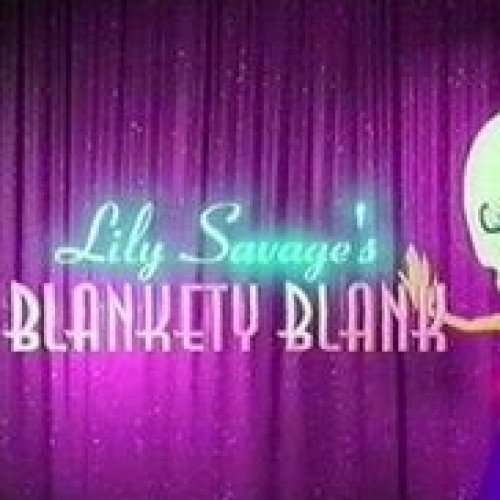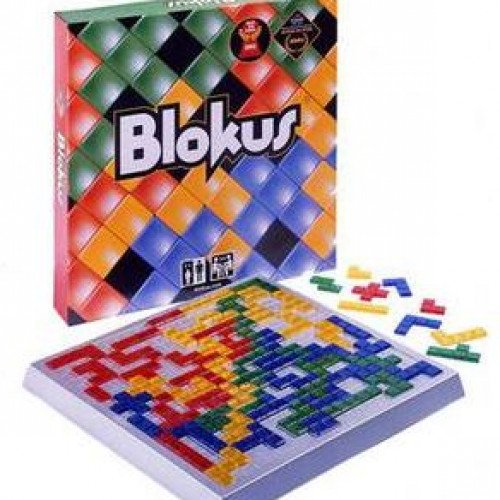"BLANKETY BLANK" vs "BLOKUS"

BLANKETY BLANK
Blankety Blank is a British comedy game show which ran from 18 January 1979 to 12 March 1990 on BBC 1, hosted first by Terry Wogan from 1979 until 1983, then by Les Dawson from 1984 until 1990. A revival hosted by Paul O'Grady (as Lily Savage) was produced by the BBC from 26 December 1997 to 28 December 1999, followed by ITV from 7 January 2001 to 10 August 2002 as Lily Savage's Blankety Blank. David Walliams hosted a one-off Christmas Special for ITV on 24 December 2016, with Bradley Walsh hosting a 2020 Christmas Special of the show for the BBC. Two contestants compete. The object of the game is to match the answers of as many of the six celebrity panellists as possible on fill-in-the-blank statements. The main game is played in two rounds. The contestant is given a choice of two statements labelled either "A" or "B". The host then reads the statement. When Les Dawson became the host, the programme did away with the A or B choice, but this was reinstated when Lily Savage became the host. Frequently, the statements are written with comedic, double entendre answers in mind. A classic example: "Did you catch a glimpse of that girl on the corner? She has the world's biggest blank." While the contestant ponders their answer, the six celebrities write their answers on index cards. After they finish, the contestant is asked for their answer. The host then asks each celebrity – one at a time, beginning with the upper left hand corner – to give their response. The contestant earns one point for each celebrity who wrote down the same answer (or reasonably similar as determined by the judges) up to a maximum of six points for matching everyone. After play is completed on the contestant's question, the host reads the statement on the other card for the opponent and play is identical. The trailing contestant begins round two, with two new questions, unless they matched everyone in the first round. Only celebrities that a contestant failed to match could play this round. If the players have the same score at the end of the show, a tiebreaker is used that reverses the game play. The contestants write their answers first on a card in secret, then the celebrities are canvassed to give their answers. The first celebrity response to match a contestant's answer gives that contestant the victory; if there is still no match (which is rare), the round is replayed with a new question.
Statistics for this Xoptio

BLOKUS
Blokus is an abstract strategy board game for two to four players, where players try to score points by occupying most of the board with pieces of their colour. It was designed by French mathematician Bernard Tavitian and first released in 2000 by Sekkoïa, a French company. It has won several awards, including the Mensa Select award and the 2004 Teacher's Choice Award. In 2009, the game was sold to Mattel. Blokus 3D, originally marketed in a Mayan theme as Rumis, uses pieces made up of unit cubes, in every permutation of three and four cubes in three dimensions. Stefan Kögl created Rumis independently from Bernard Tavitian, and is thus not related. However, Rumis was rebranded into Blokus 3D since the Blokus brand proved stronger than Rumis. There is also a major rule change; instead of being required to place pieces so they touch corner-to-corner, a piece must be placed such that it touches a face of another piece of the same color. Also, a player placing a piece cannot do so if it would create any empty space underneath any part of the piece. The objective is to build one of four different structures, each with its own placement limitations: the Tower, Wall, Steps, and Pyramid. Players attempt to place their blocks such that at the end of the game, when the structure is viewed from above, their color has the most squares showing.